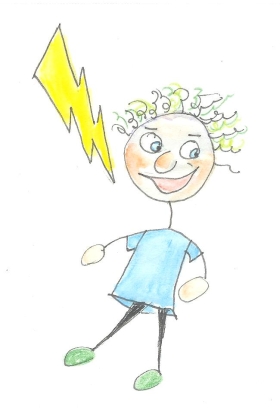Sue’s Letter from Camp – Part Three
As I gaze upon the parched earth that is Southern Ontario, I’m thinking about thunderstorms. They’re forecast for tomorrow. Thunderbolt and lightning, very very frightening!
 But apparently, not as frightening as speaking in public. As someone who coaches speakers, I see lots of fear – at least when people first contact me. We work together to take the scariness out of the experience. Of all the tools and ideas we use to make presenting resemble a relaxed conversation, the most powerful is practice. That’s where Lightning Talks will be very useful.
But apparently, not as frightening as speaking in public. As someone who coaches speakers, I see lots of fear – at least when people first contact me. We work together to take the scariness out of the experience. Of all the tools and ideas we use to make presenting resemble a relaxed conversation, the most powerful is practice. That’s where Lightning Talks will be very useful.
I was exposed to the concept a couple of weeks ago at Agile Coach Camp Canada. They were part of our “Getting To Know You” process. Participation was optional. Yet I was surprised how many people opted to participate. Aren’t these IT people? Don’t they have the gene for nondisclosure? Or introversion, at the very least? This was an event that busted all the stereotypes. I’m not sure participation would be as high in a crowd of my usual conference mates – professional communicators, coaches, and trainers.
As with the Open Space process, it was self-organizing, yet a structure emerged. We sat in a huge circle. One by one, people rose to speak for three minutes on a topic of their choosing: work, life, whatever. Some were funny, others serious. Each was an invitation to consider an idea or to take an action the speaker felt will be good for us.
No slides. No props. No fuss. No muss. These were heartfelt expressions of human thought and feeling. And the energy was such that we could have powered the building with it.
It was also infectious. That evening, more than one person told me something that sounded like, “I had no intention of participating, but the next thing I knew, I was on my feet and talking.” My own plan had been to lurk. Yet, when the session seemed to be drawing to a close, I didn’t want it to end. So I joined in with a plea to “build alliances with the communicators in your organizations, because they can help you – and you can help them.”
What was going on?
- For starters, everyone had a passion for the topic they chose. Nowhere was there the dread we see in Toastmasters of being called upon for “Table Topics,” one minute talks on a prescribed topic. (“Maybe if I look at my shoes they won’t call on me.”) People were eager to speak.
- Next, folks had clearly given their ideas some thought. They hadn’t written their speeches on 4″ x 5″ index cards, but they weren’t making it up as they went. (Promise me you will never “just wing it.”)
- A short delivery time helped, too. It forced people to focus on what’s important to their audience. And when you do that, the audience responds with their attention. It becomes communication, not oratory.
In my UN-Toastmasters Coaching Group, I have people give short talks about something they love. Now I know what to call them. Lightning Talks. Don’t leave home without one.
Other posts in this series:
- Letter from Camp
- Open Space
- Lean Coffee
- Coaching is even more valuable than I thought
To be continued . . .
